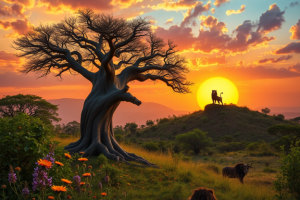
If you are ugly, you must learn to dance. So says a Zimbabwean proverb that is used to encourage people in the community to dance. And when the drummers change the beat, the dancers must change their step. African music and dance are inextricably linked – when we talk about a certain type of music we cannot fail to mention the type of dance that accompanies it. Sometimes a dance is even more noticeable than the music, which is there to simply provide the canvas for the beauty of movement to take form.
Eskista is one such dance loosely translated to ‘dancing shoulders.’ This incredible Ethiopian style sets it apart from most other African dances, which usually place emphasis on the feet and legs. To audiences outside of Ethiopia, Eskista may look very similar to the East African country’s other main dance, Tigrigna, but the two are distinct from one another in that the latter is not as static when it comes to the use of the hands and feet.
Eskista is well known among the various tribes in central and northern Ethiopia, one of them the Amhara. The dance is performed by men and women and is characterized by rolling the shoulder blades, bouncing the shoulders and tilting the chest. It is believed that the dance mimics the shaking of a snake’s tail.
The nature of the dance varies depending on themes such as war, hunting, love, religion or work. Moments of vocal lulls are also used to place emphasis of the dancing. The dancers are graceful thanks to the Gabi cloth, which is made of cotton and painted with various colors. This traditional garment makes for perfect dancing costumes as they allow ample movement and expression.
The Eskista and its accompanying music uses traditional Ethiopian instruments such as the krar, which is a five or six-stringed bowl-shaped lyre. The music also uses the flute, percussion and the mesenko, which is a single-stringed bowed lute. But similarities in the dance styles of East Africa exist after all. Even though Ethiopia and Kenya are more than 1 000km apart, the Luhya tribe in western Kenya performs a similar dance called amabegha khu mabekha, which means ‘shoulders to shoulders’.
Eskista is typically performed with traditional music but in recent times modern musicians have begun to merge it with dub, for example, linking younger people to their traditional roots. Ivorian choreographer Alphonse Tierou explains in his book ‘The Eternal Law of African Dance’ (1992) that traditional dance is an essential element of Africa’s cultural heritage. It has more power than gesture, more eloquence than word, more richness than writing, and because it expresses the most profound experiences of human beings, dance is a complete and self-sufficient language. It is the expression of life and of its permanent emotions of joy, love, sadness, hope, and without emotion, there is no African dance. All of this is true for the snake dance of Ethiopia.
Source:-https://www.musicinafrica.net/magazine/snake-dance-ethiopia
The Ethiopian Herald May 13/2021




